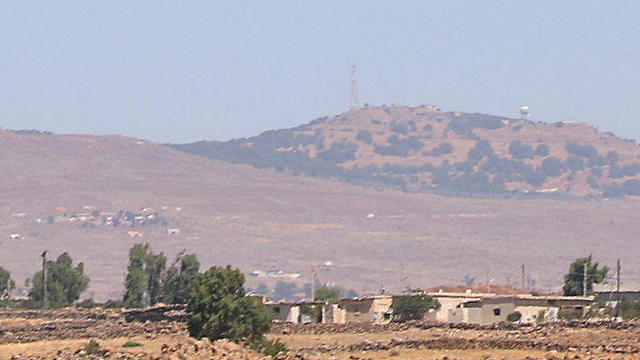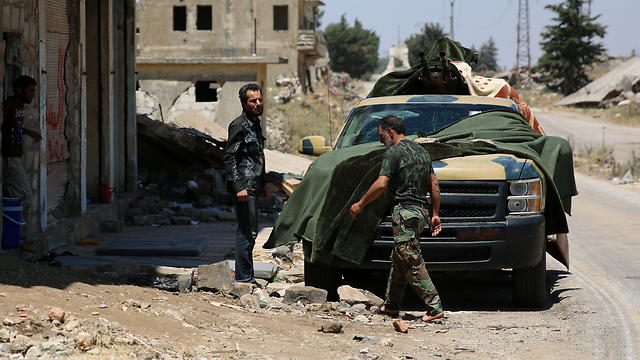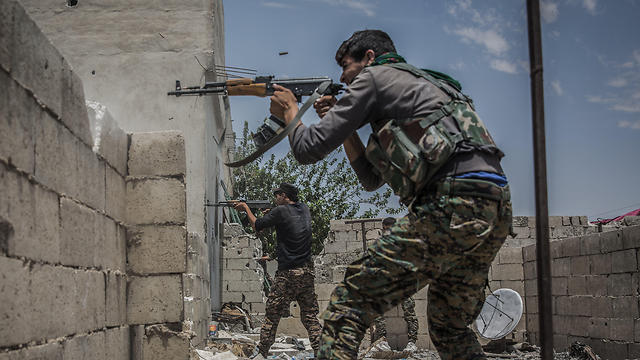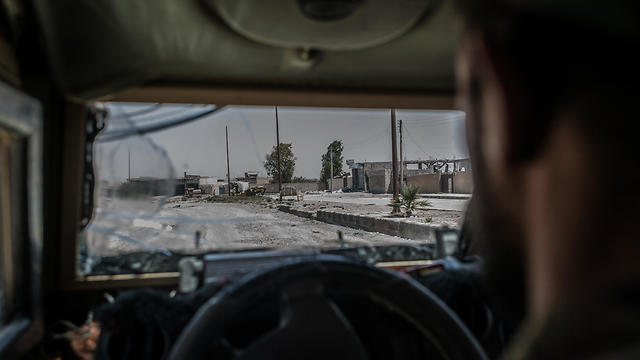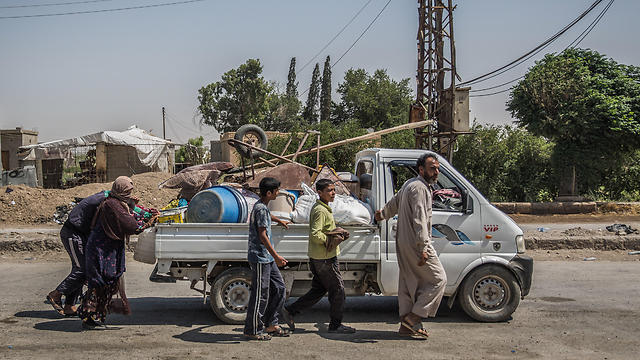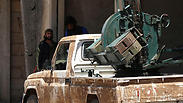
Despite ceasefire deal, Iranian stronghold in Syrian Golan still possible
Analysis: While the agreement reached between the US and Russia halts Iranian-backed militias and Hezbollah from advancing, it fails to completely remove them from the area. If and when the ceasefire is violated, they would be able to advance and create a strategic corridor to the Mediterranean Sea.
The agreement freezes the situation in the areas controlled by the Syrian regime, the areas controlled by militias operating on behalf of Iran and Hezbollah, and of course the areas controlled by the rebels, preventing the Iranian-backed militias and Hezbollah from advancing towards the Iraqi border. For now, as a result, the Iranians and their proxies are unable to create a land corridor connecting Tehran and Beirut and flanking Jordan and Israel.
Furthermore, the ceasefire will stop the “spillover” fire into the Golan Heights and Jordan from the battles between the Syrian army and the rebels. Both Israel and Jordan respond to any spillover incident, and a continuation of this situation could lead to a general flare-up in the region. A ceasefire will end the spillover fire and reduce the risk of escalation.
The third advantage of the ceasefire reached between Russia and the United States is easing the humanitarian situation in the Syrian Golan and the situation of refugees on the Jordanian-Syrian border.
The agreement does have a serious disadvantage from an Israeli perspective: It halts the advance of Iranian militias and Hezbollah, but fails to completely remove them from the area, as Israel likely demanded behind the scenes. This means that if and when the ceasefire is violated, the forces supported by Iran and Hezbollah would be able to continue their advance towards the Syrian-Jordanian border and the Syrian-Iraqi border, which will make it possible for them to create a strategic corridor to the Mediterranean Sea. Even worse is the fact that they would be able to advance and establish a stronghold in the Golan Heights.
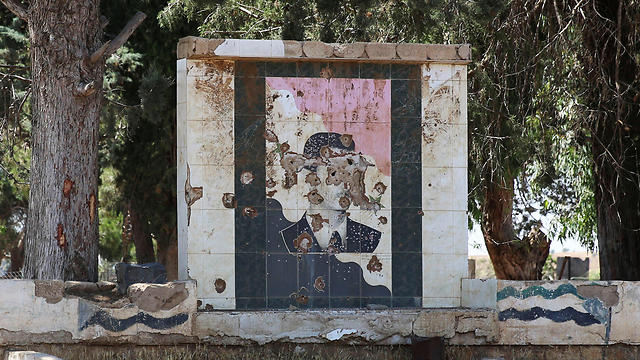
Another disadvantage of the ceasefire deal is that the Assad army and the Russians, which both have an interest in keeping Assad and his people in power, will be responsible for the agreement’s implementation on the ground. If Assad stays in power in Syria, Iran and Hezbollah will stay there too. The agreement gives the Assad regime legitimization to control Syria, and the Americans are okay with that despite the Israeli government’s demand that “the butcher from Damascus” won’t stay there under any agreement ending the war.
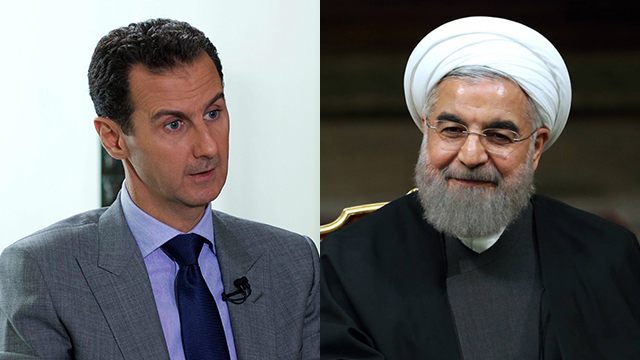
The ceasefire agreement in southwestern Syria was reached in direct talks between the US and Russia and was finalized between US President Donald Trump and Russian President Vladimir Putin in their meeting Friday. At the same time, negotiations initiated by Russia with Iran and Turkey in Astana, Kazakhstan, led to “de-escalation zones” across Syrian. There is still fighting going on in those areas, but it’s low-key, and if a ceasefire is reached there based on the Russian plan, they will turn into security zones that would draw refugees from the battle zones and serve as a basis for the diplomatic arrangement in Syria that could end the civil war there.
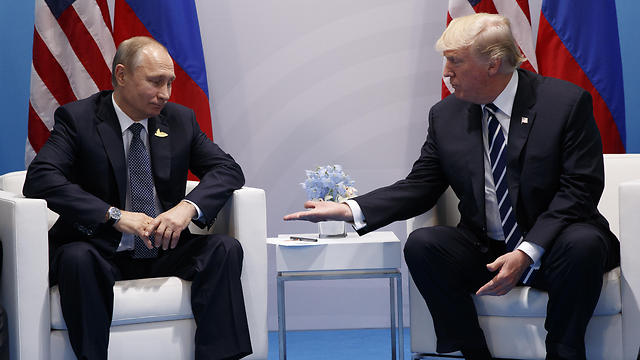
The negotiations in Astana are still far from being over, just like the UN-sponsored negotiations in Geneva for a political arrangement in Syria. The latest ceasefire in southwestern Syria is unique, as this is the first time the US and Russia are cooperating on something related to areas of influence in Syria. The ceasefire model taking effect Sunday may point to how the US and Russia plan to divide past and the present ISIS-controlled areas between them.
The parties’ interests
The US has officially announced that it has no other interest in Syria and in Iraq apart from getting rid of the Islamic State organization, although defeating ISIS and removing it from its strongholds in Iraq and Syria won’t destroy its existence as a violent Islamist idea, which will keep producing terror attacks almost all over the world. The Iraqi army was expected to announce Sunday that it has completed the occupation of Mosul, and the US-sponsored Kurdish and Arab forces are quickly advancing towards taking over al-Raqqah, the Syrian capital of ISIS.
The agreement reached between Putin and Trump offers an idea on what the political and military agreement in Syria would look like after ISIS is uprooted:
- The two world powers agree that Assad would remain Syria's legitimate and recognized leader, at least for now, in complete contradiction of the Israeli stance, which has been reiterated time and again by Prime Minister Benjamin Netanyahu, including in the past weekend.
- The Iranian forces, their militias and Hezbollah would be allowed to keep operating in Syria, but wouldn't be allowed to approach the border with Israel in the Golan Heights. They would likely remain where they are now, 40 kilometers from the Purple Line in the Golan Heights.
- The Iranian forces and their militias wouldn't be allowed to hold onto border crossings between Syria and Iraq, to prevent a strategic corridor from Tehran to the Mediterranean Sea.
- The ceasefire agreements would be implemented through remote-piloted vehicles, satellites, Russian forces and the Syrian army, which Israel sees as insufficient. It would like to have American forces on the ground, supervising the agreement’s implementation in the areas bordering the Golan Heights.
There is still the question of why this agreement was accepted by Russia, the US and Jordan, which were open partners in the negotiations, and by Israel and Syria, which were involved behind the scenes, according to the Associated Press.
The answer is that the agreement serves the interests of all parties. Russia wants to prevent an escalation in the region, which would force it to boost its military involvement and maybe create a conflict with Jordan, Israel and even the US. Russia has no interest in clashing with the US at the moment, and regulating the explosive situation in southwestern Syria serves Putin’s goal.
The American interest is similar. The US is taking care of its clients—Israel and Jordan—which might escalate their military responses in light of the spillover of fire and the humanitarian situation in southwest Syria. The US isn’t interested in solving the problem temporarily to help its clients, because that might force it to clash with Syria and Iraq. Israel and Jordan have a shared interest to prevent an escalation and stop Iran from approaching their border.
The Syrian regime, Hezbollah and Iran have a totally different interest in a ceasefire: Assad and the Iranians have realized that they are incapable of conquering the city of Daraa on the Jordanian border and that the rebels—to ease the pressure on Daraa—are successfully attacking them near new Quneitra in the Golan Heights, where the spillovers that Israel responded originated. The Syrian army is pressed in the Quneitra area. It’s failing to advance in Daraa despite help from Iran, Hezbollah and Russia, and therefore has no other choice but to agree to a ceasefire.
This is also why this ceasefire may not last very long. The moment the Syrian regime and the Iranians reach the conclusion they are strong enough to reoccupy Daraa and the border crossings between Syrian and Iraq, they will do it without any hesitation.
While Israel is not directly involved in the talks between Russia and the US, foreign sources report our influence there goes beyond the Netanyahu-Trump level and is also apparent in lower working levels with representatives of the American administration dealing with the Syrian situation. On the other hand, Israel is not involved in the negotiations in Astana because of Iran’s participation, and therefore won’t recognize its results, at least according to a very senior Israeli security source.










